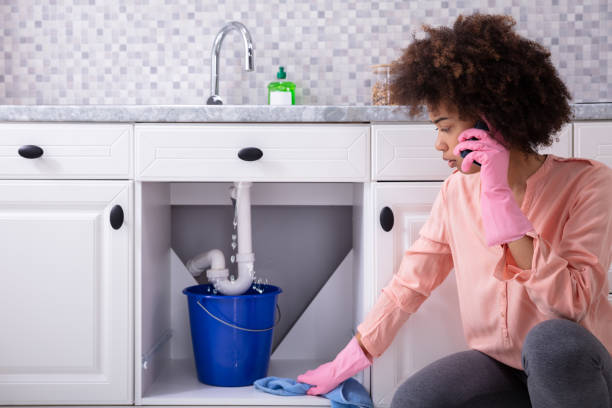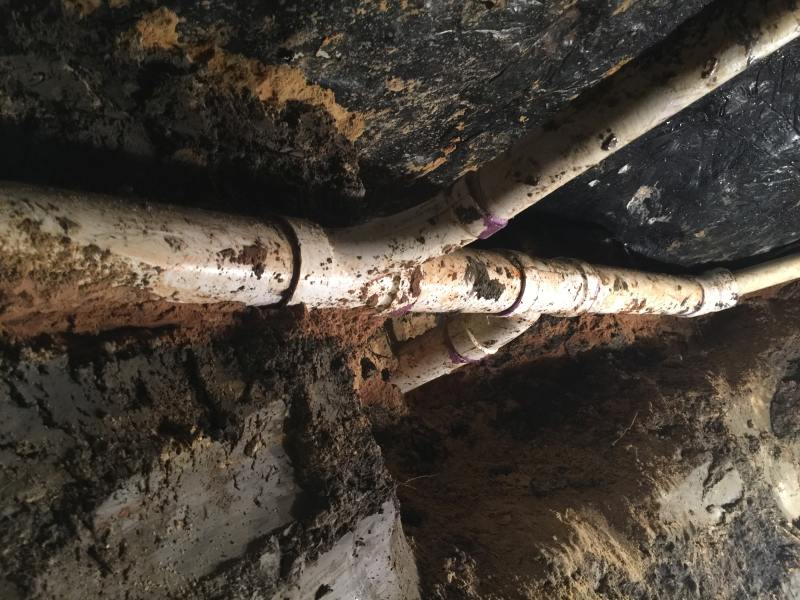Fixing Plumbing Issues in Older Homes: An Expert Guide
Fixing Plumbing Issues in Older Homes: An Expert Guide
Blog Article
Everyone is bound to have their unique conception in relation to Main Plumbing Issues Found in Old Houses.

Older homes commonly feature beauty, character, and history, however they can likewise bring a host of pipes concerns. Whether you're dealing with aging pipelines, low water pressure, or leakages, recognizing how to attend to these typical problems is critical to maintaining a safe and useful home. In this guide, we'll explore the common pipes difficulties faced by older homes and give sensible solutions to maintain your pipes in top shape.
Recognizing Usual Plumbing Problems
Aging Pipes
Among one of the most typical problems in older homes is aging pipes. Relying on the era in which your home was developed, the pipelines could be made from materials that have actually weakened over time, such as galvanized steel, cast iron, and even lead. These products can corrode, come to be fragile, or establish leakages, bring about water damages and potential health hazards.
Water Quality Screening
Older pipelines can influence the top quality of your water. Conduct a water top quality test to check for impurities such as lead, corrosion, or other contaminations that might be presented by maturing pipes.
Solutions for Typical Pipes Problems
Changing Aging Pipelines
If your home has old, wearing away pipes, think about replacing them with contemporary products like copper or PEX. This can be a considerable financial investment, but it will protect against future problems and boost the safety and dependability of your pipes system.
Fixing Low Water Pressure
To repair low tide stress, start by cleansing or changing old components and getting rid of mineral buildup in the pipes. If the trouble lingers, it might be required to replace areas of corroded pipes.
Repairing and Replacing Leaking Pipes
For little leaks, you can utilize pipe clamps or epoxy putty as a momentary fix. Nonetheless, it's ideal to replace dripping pipelines completely to avoid additional damages.
Upgrading Components
Updating old components to contemporary, water-efficient designs can enhance your home's plumbing performance and minimize water intake. Try to find components with the WaterSense tag for the very best performance.
Managing Pipeline Rust
If your pipes are worn away, replacing them with corrosion-resistant materials like copper, PVC, or PEX is the very best remedy. Routine evaluations and water high quality maintenance can aid protect against better rust.
Low Tide Stress
If you're experiencing low water pressure, it could be due to natural resources, deterioration inside the pipes, or old fixtures that are no more functioning successfully. This can be a significant inconvenience, especially in locations like showers and sinks.
Leaking Pipelines
Leakages are one more regular problem in older homes, usually triggered by corroded or worn-out pipes. Also tiny leaks can result in significant water damages, mold growth, and raised water expenses if not addressed quickly.
Outdated Fixtures
Out-of-date plumbing components such as faucets, commodes, and showerheads not only look old however might also be much less efficient, susceptible to leakages, or inappropriate with contemporary pipes standards.
Pipeline Deterioration
Deterioration is a common problem in older pipelines, particularly those made from galvanized steel or actors iron. Rusty pipes can restrict water flow, create discoloration, and at some point lead to leaks or pipeline ruptureds.
Examining the Problem of Your Pipes
Examining Visible Pipelines
Begin by inspecting any kind of visible pipelines in your home, such as those in cellars, crawl spaces, or under sinks. Search for indications of rust, leakages, or corrosion, which can indicate underlying issues.
Looking for Leaks
Look for leakages by inspecting locations around faucets, bathrooms, and under sinks. You can additionally check your water meter before and after a duration of no water make use of to detect hidden leaks.
When to Call an Expert
While some plumbing concerns can be handled with DIY services, there are times when it's finest to call a specialist. If you're dealing with significant leaks, considerable deterioration, or are unclear about the condition of your pipes, a certified plumbing professional can offer experienced analysis and repair.
Preventive Maintenance Tips
Normal Evaluations
Consistently inspect your plumbing system for indicators of deterioration. Capturing problems early can avoid pricey repair services down the line.
Water Pressure Guideline
Guarantee your water pressure is within the suggested variety to prevent stressing your pipes and components. A plumber can mount a stress regulator if needed.
Water High Quality Maintenance
Set up water filters or conditioners if your water quality is poor. This can safeguard your pipes and components from damages brought on by hard water or contaminants.
Aggressive Pipeline Substitute
If your home has very old pipes, consider positive replacement prior to major problems occur. This can conserve you from emergency fixings and water damage.
Verdict
Handling pipes issues in older homes requires a combination of alertness, preventative maintenance, and prompt upgrades. By understanding the usual challenges and knowing when to look for professional assistance, you can ensure your plumbing system continues to be practical and dependable for many years to find.
7 Common Plumbing Issues in Older Homes
Read More Plumbing Articles
Whether you're mulling over purchasing your dream period property, or you already own one, being aware of common plumbing problems in old homes can help you avoid expensive mishaps.
Many plumbing problems in old homes are similar to those faced in newer properties, but some are more prevalent in houses over a certain age. If you've recently bought an old house or haven't had your aging plumbing system inspected in a while, it's worth keeping an eye out for the following issues:
Bad Pipe Materials
Depending on the age of your home, the pipe materials used in your plumbing system may not comply with modern building codes and could be unsafe.
Lead pipes are the most dangerous type of old plumbing pipes. This metal was once used extensively for manufacturing water pipes because it's easy to shape and has a long lifespan. Plumbers also used it to solder joints between pipes made from other materials. However, lead can cause serious health problems, particularly in children. Drinking water from pipes containing lead can lead to lead poisoning symptoms, such as stomach pain and fatigue, so it's essential to replace them if you discover them in your home.
Outdated Fixtures
Even if the previous owners installed high-quality fixtures, these won't be immune to the effects of age and wear and tear. Over time, fixtures can corrode and wear down, increasing the likelihood of leaks and clogs.
Sometimes, an outdated fixture can be a minor irritation that makes using your plumbing system less convenient. However, it's best to maintain older plumbing components carefully and replace them when they show signs of failure to avoid a major leak and water damage.
Corroded or Leaking Pipes
Corroded pipes are a common plumbing issue in old homes. Corrosive substances in the water supply can gradually break down the metal used to make the pipes, eventually causing leaks. Corrosion can also cause sediment to build up, increasing the chances of a clogged pipe. All these issues take time to develop, making them more likely in old house plumbing.
Drain Problems
Older home drainage systems were often installed before the arrival of appliances such as garbage disposals, so they're frequently incapable of handling modern household usage. The result could be frequent clogs or water backing up into sinks and other fixtures.
A failing sewer line is the most serious drainage issue commonly encountered in old houses. This problem is more likely if you've remodeled your home to add more fixtures, placing more pressure on a sewer line not designed for the purpose. Eventually, the line can become clogged, causing unpleasant indoor smells, poor drainage and contaminated wastewater backing up into your fixtures.
Pipe Bellies
Pipe bellies develop when pipes buried in your home's foundation start sagging as the building settles. They create downward slopes, affecting water drainage and increasing the risk of significant blockages. You don't need to worry about pipe bellies in a pressurized main line, as the water pressure prevents the pipes from clogging, but they can cause issues in drain lines.
Root Intrusion
Root intrusion occurs when trees and other shrubs grow roots too close to your sewer line or water service line. Sometimes, the roots penetrate the pipe walls, leading to leaks and soft or wet areas in your yard.
Unfortunately, root intrusion is a more common plumbing problem in old homes. That's because older houses are more likely to have pipe bellies allowing standing water to accumulate, attracting roots to the moist conditions.
https://www.elocal.com/resources/home-improvement/plumbing/faq/plumbing-issues-in-older-homes/

Do you like reading up on Plumbing Problems In Old Homes? Make feedback down the page. We'd be delighted to listen to your feelings about this post. In hopes that you visit us again in the near future. Appreciated our posting? Please quickly share it. Let other people find it. Thanks for taking the time to read it.
Book Instantly Report this page